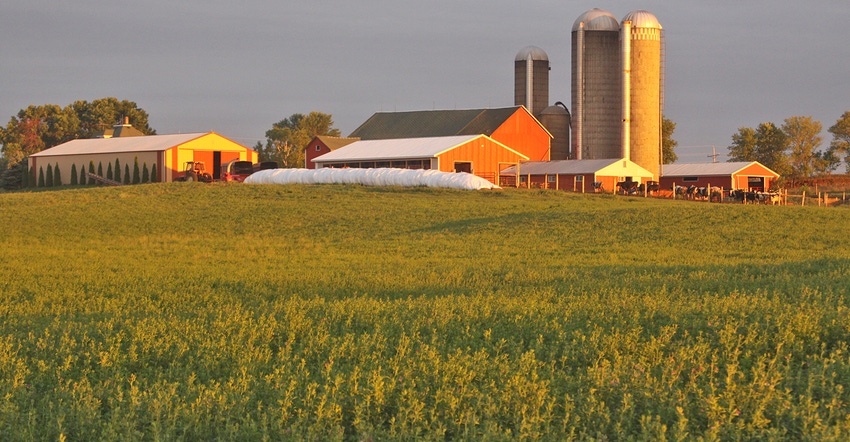November 13, 2018

My husband and I are 52 years old. We milk 140 cows and farm 200 tillable acres in central Wisconsin. I was alarmed to read that the U.S. is producing 17 billion pounds of milk this year. Thirty years ago when we started farming, we were producing 10 billion pounds of milk. I realize the population has grown a little and we export 16% of the dairy products we produce, but where is the rest of this milk going? It doesn’t seem like milk consumption is rising. I know milk production has been going up between 1% and 2% per year, but I had no idea it was that high.
I fear milk prices could plummet, and we could be wiped out in the blink of an eye. We can’t milk more cows because the cheese plants can’t and won’t take more milk. Around here, if you sell your farm, you can’t sell it as a dairy farm. The cheese plants will take your milk, but if someone else buys your farm, they’re not going to buy their milk. That’s OK if you have a tiestall barn and didn’t update your facilities, but we built a new freestall barn and double-four milking parlor 10 years ago, and now we feel stuck. What are your thoughts?
Hodorff: You feel stuck just like a lot of other dairymen out there. Prices are below costs for a majority of producers. We all make choices, and you made a choice to upgrade your facilities 10 years ago. At the time, it was a viable choice and made sense. No business has a guarantee of being profitable or receiving a price above costs. What we are guaranteed is things will change! The government can change monetary policy; the consumer can change buying habits. Our industry has changed dramatically in the last 25 years. I can’t imagine what the next 25 years will bring us.
Miller: Fortunately, both population and dairy production consumption have grown over the last 30 years. The U.S. population has increased to 327 million from 247 million people in 1988. Per capita dairy consumption increased from 570 to 640 pounds per person over that same period of time, largely on greater cheese usage. Milk production has increased, but population and consumption per person have almost kept pace.
The differences you note is exports, now over 16% of U.S. milk production compared to 30 years ago, when the U.S. was a net dairy product importing country. The challenge is, we are now more reliant on export markets picking up increases in milk production above population growth. The strength of the dollar in the last couple of years, coupled with trade and tariff-related issues, make this a headwind, and the dairy industry is facing challenging times. Know and manage your cost of production, produce high-quality milk, and keep an open line of communication with your processor in order to navigate this difficult dairy period.
Wantoch: Bob Cropp, professor emeritus at University of Wisconsin-Madison, continues to provide a monthly dairy situation column. I believe that he agrees with your sentiments on the current status of the oversupply of milk in the U.S., though there may be some improvement in milk prices in 2019. Running a business is risky, but only you can decide when to hold on or when to let go, reduce your risk and consider a new opportunity.
Agrivision panel: Doug Hodorff, Fond du Lac County dairy farmer; Sam Miller, managing director, group head of agricultural banking, BMO Harris Bank; and Katie Wantoch, Dunn County Extension ag agent specializing in economic development. If you have questions you would like the panel to answer, send them to: Wisconsin Agriculturist, P.O. Box 236, Brandon, WI 53919; or email [email protected].
You May Also Like




